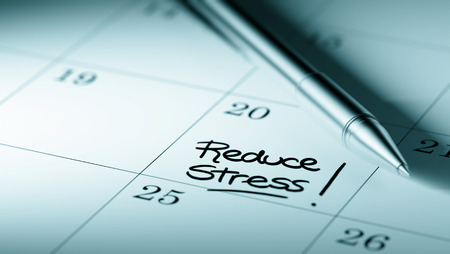3 easy steps to finding more affordable health insurance options
 Finding affordable health insurance plans doesn’t have to be difficult. However, with the average cost of individual health insurance plans skyrocketing each year (rising past $321/month in 2017), more and more people are frustrated by what feels like a tough decision between budget-conscious monthly premiums and enough coverage to provide peace-of-mind in case of serious medical emergencies.
Finding affordable health insurance plans doesn’t have to be difficult. However, with the average cost of individual health insurance plans skyrocketing each year (rising past $321/month in 2017), more and more people are frustrated by what feels like a tough decision between budget-conscious monthly premiums and enough coverage to provide peace-of-mind in case of serious medical emergencies.
If you want to control your health care costs without sacrificing the quality of your health insurance coverage, here are some useful strategies for making health insurance more wallet-friendly:
Talk to a Health Insurance Expert
First things first: call a trustworthy health insurance broker before making any decisions. These folks are trained to be the best at researching different insurance options and finding a policy that works for your budget and lifestyle/health needs. You may not realize all of the many factors that go into choosing a health care plan, and going alone leaves you vulnerable to making costly mistakes that an insurance expert would have easily avoided if they were able to guide you in the right direction.
Compare Different Plans
A common mistake individuals make while shopping for health insurance is not comparing their options! Instead, they focus on just one or two aspects, such as monthly cost, one area of coverage, availability of in-network doctors nearby, or other customers’ ratings. Rather than making a decision based on a limited set of criteria, you should take everything into consideration and narrow your choices down to the two best options after some light research (your insurance broker can certainly help you with this).
The most affordable plan might not have many in-network providers in your area (forcing you to spend more money on transportation expenses or expensive out-of-network care), while a pricier plan may have doctors nearby and lower copayment costs for services and prescriptions you routinely use.
Beware ‘Bare Bones’ Insurance
When it comes to affordable health insurance, the plan with the lowest monthly payment on paper might not always be the cheapest option in reality. After all, there’s an inverse relationship between monthly premiums and deductibles: the higher your premium is, the lower your deductible will be (and vice versa).
If you are young and healthy, then perhaps a high deductible plan might work for you because you don’t anticipate using it a lot – if ever – throughout the year. But the dark side of ‘bare bones’ insurance plans – which offer minimal benefits and $5,000+ deductibles before coverage really kicks in – is that you could be in serious financial trouble if a costly medical emergency occurs. With this in mind, it’s generally best to strike a balance between monthly premiums and annual deductibles, rather than choosing the high-deductible plan with low monthly premiums simply because it’s more affordable in the short-run.



 Small businesses often don’t have a lot of money to spend on employee benefits, let alone to start and run a wellness program. But there are some simple steps you can take to make your office a healthier place for all of your employees:
Small businesses often don’t have a lot of money to spend on employee benefits, let alone to start and run a wellness program. But there are some simple steps you can take to make your office a healthier place for all of your employees:
 When it comes to sports and exercise, there’s probably nothing worse than getting into a good groove only to have your efforts halted in their tracks by an injury. Not only is it incredibly frustrating in the moment, but that injury could haunt you for weeks or even years.
When it comes to sports and exercise, there’s probably nothing worse than getting into a good groove only to have your efforts halted in their tracks by an injury. Not only is it incredibly frustrating in the moment, but that injury could haunt you for weeks or even years.
 You get once-yearly health checks and dental cleanings every six months. But when was the last time you had your eyes checked? Many people put off regular eye exams because they are busy or think it’s an unnecessary cost. But yearly eye exams can help detect and treat a number of serious eye conditions such as glaucoma and diabetic eye disease. Many problems with eyes provide no early warning signs or symptoms, and can only be detected through a comprehensive eye exam. You may not realize that eye exams also can help detect health conditions such as diabetes, high cholesterol and even high blood pressure.
You get once-yearly health checks and dental cleanings every six months. But when was the last time you had your eyes checked? Many people put off regular eye exams because they are busy or think it’s an unnecessary cost. But yearly eye exams can help detect and treat a number of serious eye conditions such as glaucoma and diabetic eye disease. Many problems with eyes provide no early warning signs or symptoms, and can only be detected through a comprehensive eye exam. You may not realize that eye exams also can help detect health conditions such as diabetes, high cholesterol and even high blood pressure.
 It’s wedding season! Did you know that tying the knot could provide an opportunity for you to obtain health insurance coverage before the next open enrollment period?
It’s wedding season! Did you know that tying the knot could provide an opportunity for you to obtain health insurance coverage before the next open enrollment period?
 The sun is shining. The birds are chirping. The wind is gentle. It is simply a beautiful day to be outside! But the great outdoors also can be unpredictable. Whether you are by yourself or with friends and family, here are some tips to help you safely enjoy the outdoors.
The sun is shining. The birds are chirping. The wind is gentle. It is simply a beautiful day to be outside! But the great outdoors also can be unpredictable. Whether you are by yourself or with friends and family, here are some tips to help you safely enjoy the outdoors.
 Summer can be a fun time of the year. But did you know it also can be great for your health? Here’s why the warmer months can be just what the doctor ordered:
Summer can be a fun time of the year. But did you know it also can be great for your health? Here’s why the warmer months can be just what the doctor ordered:
 It’s estimated that on-the-job stress costs U.S. companies more than $300 billion annually in increased absenteeism, reduced productivity, increased health care costs and employee turnover. Stress, however, is a very individualized phenomenon — what causes stress in one person may not cause stress in another. The good news is that research has identified a number of stressors that often affect large groups of employees — and the ways employers can help address them.
It’s estimated that on-the-job stress costs U.S. companies more than $300 billion annually in increased absenteeism, reduced productivity, increased health care costs and employee turnover. Stress, however, is a very individualized phenomenon — what causes stress in one person may not cause stress in another. The good news is that research has identified a number of stressors that often affect large groups of employees — and the ways employers can help address them.
 College students have several options when it comes to health insurance. Here are some of the most popular ways to obtain coverage:
College students have several options when it comes to health insurance. Here are some of the most popular ways to obtain coverage:
 Even the most meticulous of homeowners may be surprised to learn their kitchen is crawling with bacteria. Gross! No fear though — there are some easy ways to keep your kitchen from making you sick.
Even the most meticulous of homeowners may be surprised to learn their kitchen is crawling with bacteria. Gross! No fear though — there are some easy ways to keep your kitchen from making you sick.